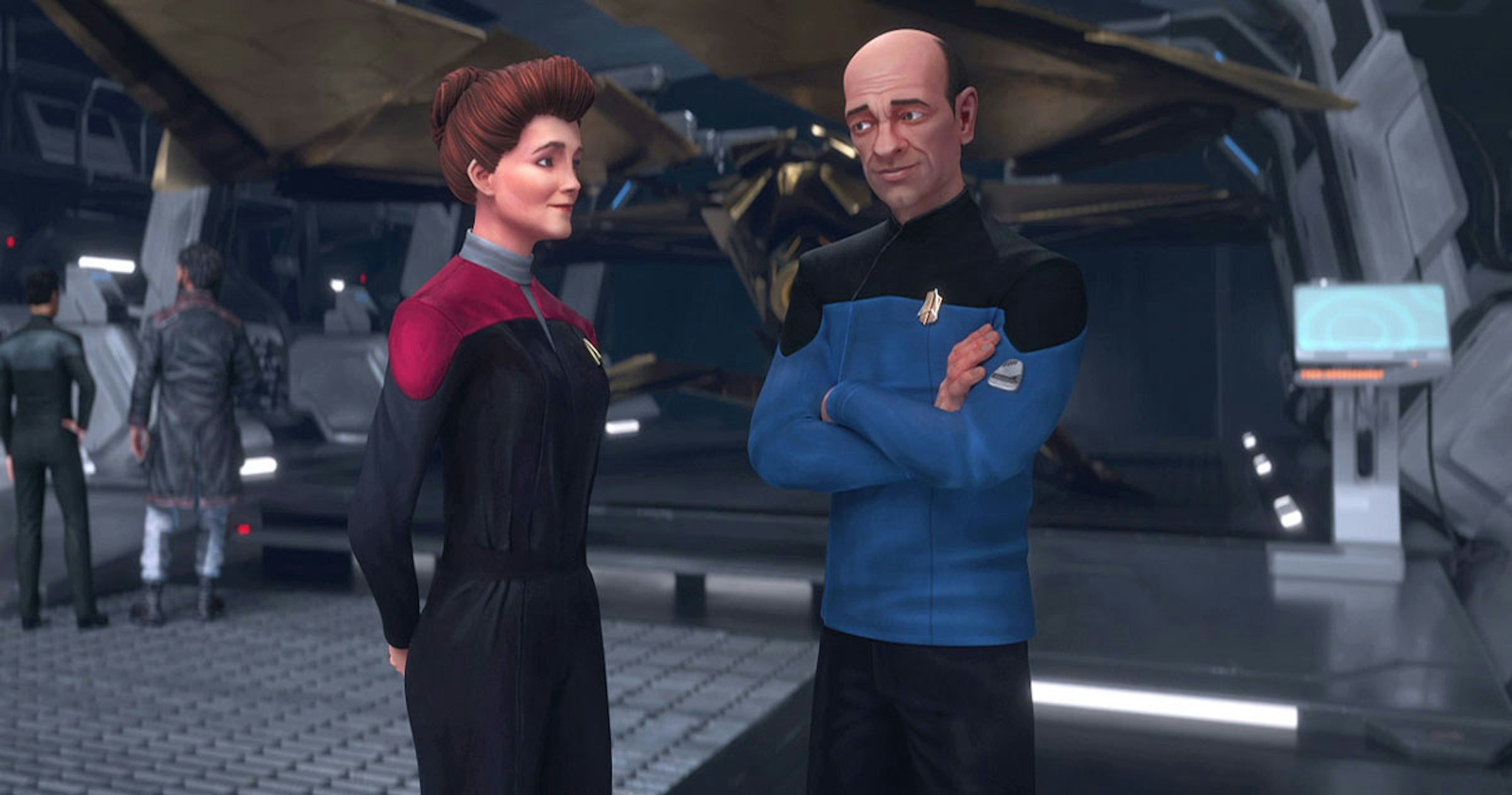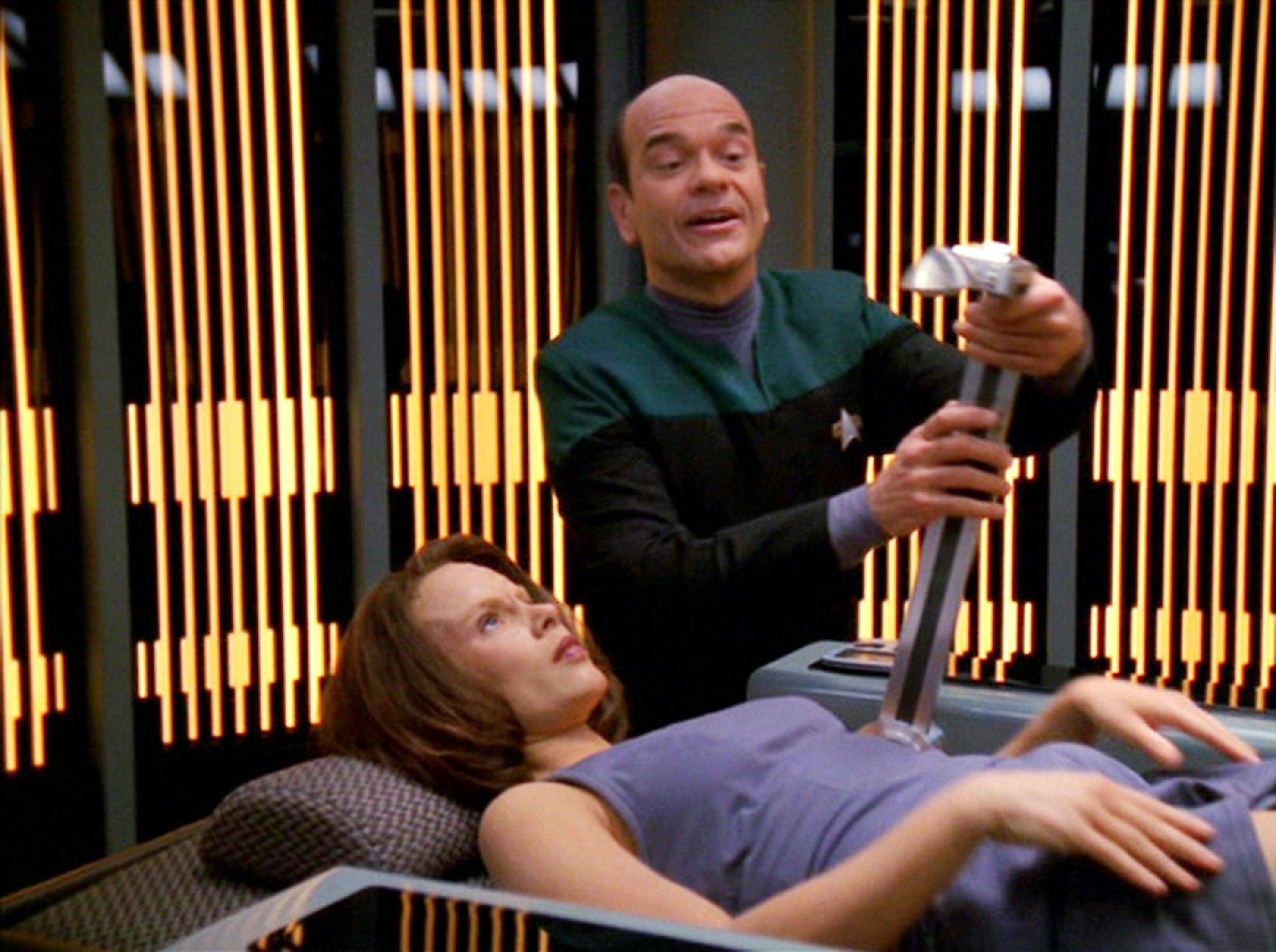
Nearly 30 years ago, in 1995, the USS Voyager’s chief medical officer was slain, so a backup was brought online in the form of a sentient AI hologram, formally known as the EMH — emergency medical hologram. But because the ship was stranded on the far end of the galaxy in the very first episode of Star Trek: Voyager, the EMH, later just known as “the Doctor,” became the full-time physician for the crew, despite being an AI that merely projected a physical body.
Played with epic sass by the legendary Robert Picardo, the Doctor wasn’t Star Trek’s first regular AI character. In fact, he wasn’t even Star Trek’s first self-aware hologram. The Voyager writers were inspired by the self-aware holographic version of the Sherlock Holmes villain Professor Moriarty (Daniel Davis) who had previously appeared in The Next Generation. “I think they sort of got the idea from developing his character,” Picardo tells Inverse. And now, almost three decades later, many wonder which kind of AI are we going to end up with — Moriarty or the Doctor?
“The Doctor’s growing sense of entitlement was always a positive thing on Voyager,” Picardo says. “But, obviously with artificial intelligence, their growing sense of entitlement can also represent something very dark and terrifying.”
As he makes his triumphant return to Star Trek, once again playing the Doctor in Star Trek: Prodigy, we caught up with Robert Picardo to get his take on coming back to Starfleet after all these years, and what real-world changes his famous character actually inspired.
Mild spoilers ahead for Star Trek: Prodigy Season 2.
The Return of the Doctor

Because Star Trek: Prodigy Season 2 takes place in 2384 and 2385, the series is contemporaneous with both Lower Decks and the backstory of Picard Season 1. This is why Prodigy Season 2 ends with the events that essentially began Picard Season 1, but it’s also why the Doctor mentions having dealt with the dysfunctional Lower Decks crew of the “Cerritos” in Prodigy. As the unofficial guide for the Prodigy kids on the USS Voyager-A, Picardo plays the Doctor basically exactly as he was on Voyager, which makes sense because this is technically only a few years after Voyager returned to the Alpha Quadrant. But Picardo admits that finding the literal voice of the Doctor was a little difficult. At first.
“It was mostly pitching up what I believe is my now-an-octave-lower voice in the same zone that the Doctor usually worked in,” Picardo says. “As we all know, holograms don’t age. So that was my main concern — not sounding older.”
Longtime Voyager fans will probably agree that Prodigy’s version of the Doctor sounds straight out of the 1990s and that the character both aesthetically, and at his core, hasn’t changed at all. “I retained all of his foibles over the years,” Picardo says. “The character’s self-opinion, his desire to always increase his usefulness to the crew, all of that stayed pretty fresh in my mind.”
Robert Picardo’s Prescription for the Future

At the time Star Trek: Voyager aired, the idea of a virtual physician, rather than a real human doctor, seemed like a leap centuries away, rather than decades. But now, of course, the ethics of actual AI doctors is an emergent issue, one that Picardo is very aware of.
“Certainly the boom in public discussion about artificial intelligence, it’s really started, it seems to me, in the last two years,” Picardo says. “I remember about a year and a half ago being interviewed by a Harvard medical doctor researcher who was writing a book on artificial intelligence in medicine. He wrote a whole chapter about me simply because his personal journey as a young man was watching Voyager and thinking that the perfect doctor was an artificial intelligence doctor, simply because you could program him with everything that every culture knew about medicine at that moment in time.”
But after this real-life Harvard doctor actually started studying medicine, he realized something that Picardo himself agreed with. “The journey of the Doctor on Voyager is that the doctor-patient relationship evolved,” Picardo explains. “It was the necessity for that connection and trust between the medical provider and the patient. It’s not just information or how to communicate it. It was the human aspect.”
On top of all of this, Picardo also suggests that outside of the fact that AIs tend to have bad bedside manners (just as the Doctor did at the start of Voyager), the real concern is one of security. “I have great respect for medicine and for doctors, but a lot of the key issues that we’re all grappling with now with artificial intelligence we dealt with on Voyager 25 years ago,” he says. “If you design an AI to serve mankind, but someone can hijack the core programming and flip a switch. Well, then all bets are off.”
Star Trek: Prodigy streams on Netflix.
Phasers on Stun!: How the Making — and Remaking — of Star Trek Changed the World








